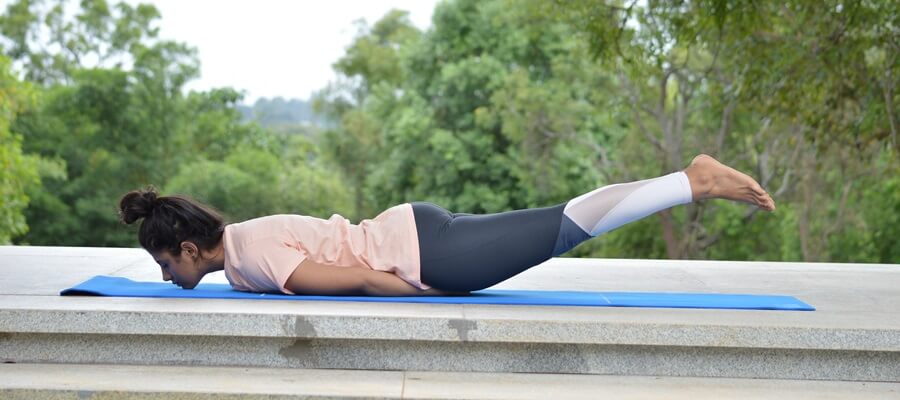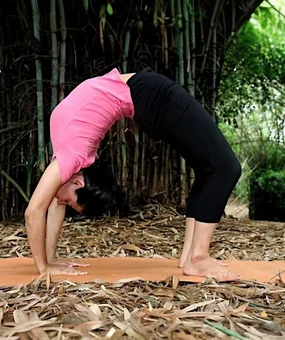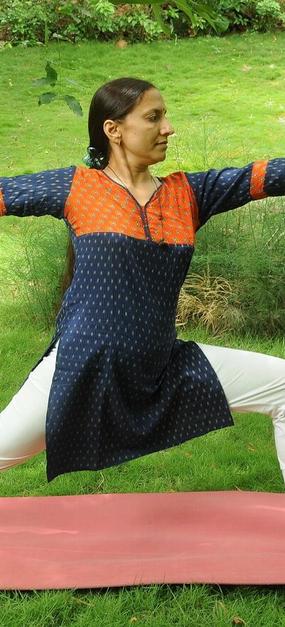This asana is pronounced as “sha-la-bhah-sa-na”.
The Sanskrit word Shalabha means locust or grasshoper

There is a variation of this posture called the “viparita-shalabha” asana. The Sanskrit word “viparita” means “reverse.” This is an advanced variation not covered here.
How to do Shalabhasana
- Lie on the stomach with the head turned to one side and the arms alongside the body with palms facing upward.
- Turn the head and place your chin on the floor. Slide your hands under your thighs, with the palms pressed gently against the top of your thighs.
- Inhale slowly and then raise the head, chest, and legs off the floor as high as possible. Tilt your head as far back as possible. Keep your feet, knees, and thighs pressed together.
- Starting at the top of the head and working your way down to the feet, bring your attention to each part of your body, consciously relaxing it before proceeding on to the next.
- Remain in the posture while holding the breath. You can support your legs by pressing the hands upward against your thighs.
- Hold the posture for as long as you can hold the inhaled breath then slowly return the legs, chest, and head to the floor while exhaling.
- Remove your hands from under your thighs and place the arms alongside your body. Turn your head to the side and rest.
Duration/Repetitions:
Hold this posture for as long as you can hold the inhaled breath. Repeat the shalabha-asana three times.
Benefits of the Shalabhasana
- Increases flexibility and strength of the entire back
- Strengthens shoulders and arms
- Tones the nerves and muscles especially in the neck and shoulders
- Massages and tones abdominal organs, and improves digestion
- It stimulates the stomach and intestines helping to relieve gastrointestinal gas, strengthens the bladder, and stretches the spine.
Previous yoga pose: Viparita Salabhasana
Next yoga pose: Urdhva Mukha Svanasana














